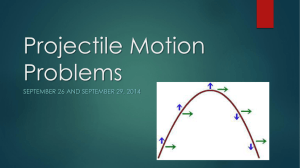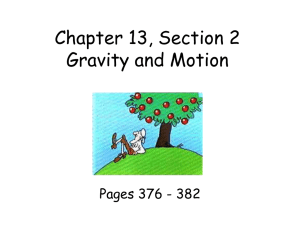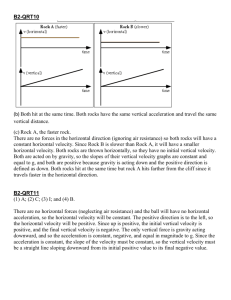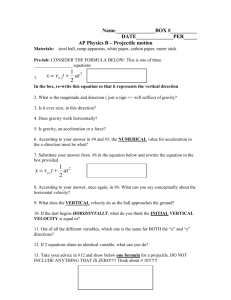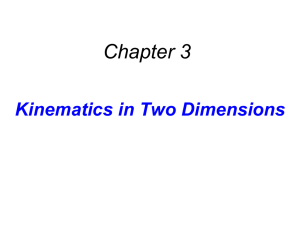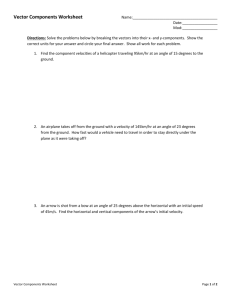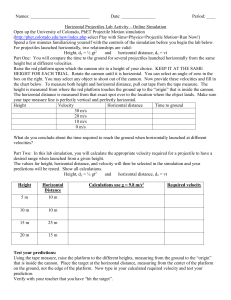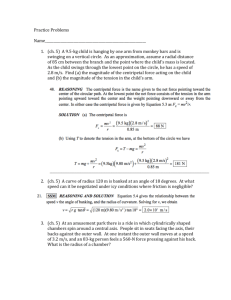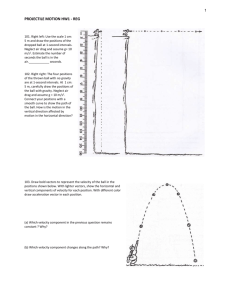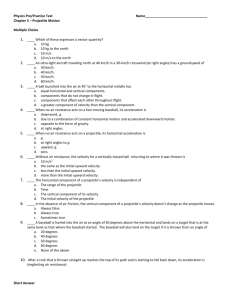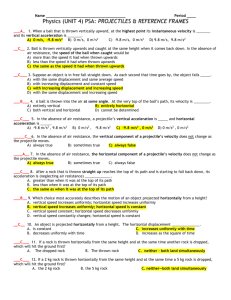Projectiles
advertisement
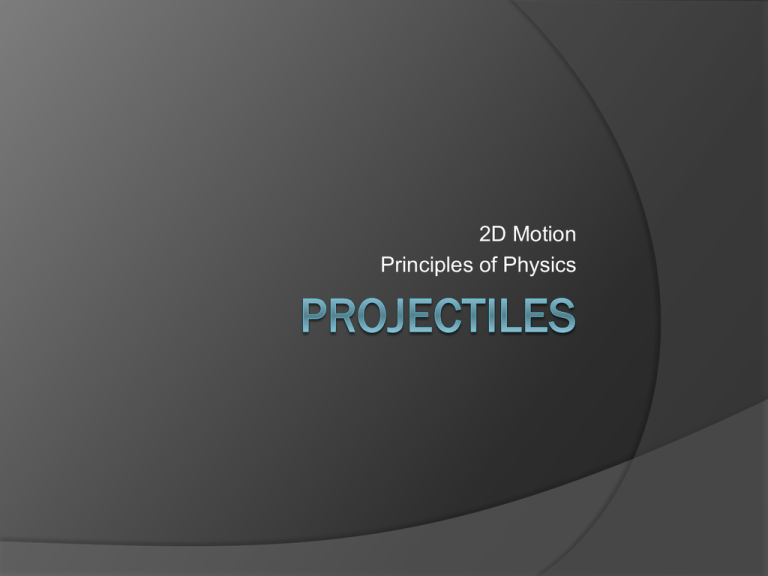
2D Motion Principles of Physics CAR A v = 2 m/s CAR B v=0 Both cars are the same distance above the ground, but Car A is traveling at 2 m/s and Car B has no velocity. Which car will hit the ground first? Assuming there is no friction, both will hit the ground at the same time!!! Why do both cars hit the ground at the same time? Only one force acts on them GRAVITY Gravity only acts up and down, so it only affects the vertical motion of the object The horizontal motion of the object does not affect vertical motion How can an object have vertical and horizontal motion at the same time?? Path if there was no gravity Path with combined horizontal and vertical motion Path if object did not have an initial velocity Projectiles Objects under the influence of gravity ONLY Examples 2D: objects with motion in both horizontal and vertical directions Ball moving through the air after it has been thrown Clown shot out of a cannon at the circus 1D: objects in free fall or objects thrown straight upward (only vertical motion) Skydiver (with no air resistance) Acorn falling from an oak tree Trajectory Path followed by a projectile Horizontal: launched parallel to the ground Angular: launched at an angle above the ground θ Horizontal Direction NO forces act on the projectile Horizontal velocity is constant Vertical Direction Gravitational force acts on the object Object accelerates downward at 9.8 m/s2 Velocity increases on the way down Time the projectile is in the air depends on how far down it falls Problem Solving vx = horizontal velocity (m/s) dx = horizontal displacement (m) t = time (s) dy = vertical displacement (m) a = -9.8 m/s2 Problem Solving x d vx x t y 1 2 d y at 2 Example 1: An object is thrown horizontally off a cliff with an initial velocity of 5.0 m/s. The object strikes the ground 3.0 s later. (Neglect Friction) Calculate the horizontal displacement of the object. x dx vx t 5= dx __ 3 dx = 15 m y dy 1 2 gt 2 Example 1: An object is thrown horizontally off a cliff with an initial velocity of 5.0 m/s. The object strikes the ground 3.0 s later. (Neglect Friction) Calculate the vertical displacement of the object? x dx vx t y 1 2 d y at 2 dy = ½ (9.8 ) (3)2 dy = 44.1 m Example 2: A toy car drives horizontally with a velocity of 6 m/s off a table that is 1.6 m high. (Neglect friction) Calculate the time it takes for the car to hit the ground. x y 1 2 d y at 2 dx vx t 1.6 = ½ (9.8) (t2) 1.6 4.9 = 4.9(t2) 4.9 0.33 = t2 t = 0.57 s Example 2: A toy car drives horizontally with a velocity of 6 m/s off a table that is 1.6 m high. (Neglect friction) Calculate the horizontal displacement of the object. x dx vx t 6 = dx __ 0.57 dx = 3.42 m y dy 1 2 gt 2
